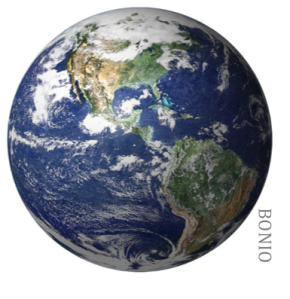By Lilian Halstead
With the world becoming ever more connected, people are not the only things taking advantage of planes and boats to get around. Plant species are constantly being introduced, intentionally or otherwise, into places far outside their original range. The term ‘invasive species’ is sometimes used to refer to any of these non-native species. However, it more usually refers to species that are not native to the country they are growing in but that are able to propagate of their own accord and cause both environmental and economic problems. Not all species that aren’t native are invasive: in fact, it is estimated that out of all the new species arriving by human influence, only ten percent of those will survive in their new environment, and only ten percent of those will go on to have any measurable impact. But if you think of the number of plant species in gardens across the UK, that’s still a substantial number.
 Most invasive plants in Britain start off as garden plants that spread to the wild either by releasing seeds or through being dumped as garden waste. Surprisingly, many invasive species are still being sold as garden plants despite their known detrimental effects on biodiversity. Parrot’s Feather is a water plant often sold as an oxygenator for ponds that forms thick mats of vegetation, blocking out light and choking waterways so much that they dramatically increase the risk of flooding. Ironically, Japanese Knotweed, now a notorious invasive species that would cost over £1.5 billion to eliminate from the UK, won a gold medal for being “the most interesting new ornamental plant of the year” when it was first introduced.
Most invasive plants in Britain start off as garden plants that spread to the wild either by releasing seeds or through being dumped as garden waste. Surprisingly, many invasive species are still being sold as garden plants despite their known detrimental effects on biodiversity. Parrot’s Feather is a water plant often sold as an oxygenator for ponds that forms thick mats of vegetation, blocking out light and choking waterways so much that they dramatically increase the risk of flooding. Ironically, Japanese Knotweed, now a notorious invasive species that would cost over £1.5 billion to eliminate from the UK, won a gold medal for being “the most interesting new ornamental plant of the year” when it was first introduced.
So introducing species for gardens can lead to invasive species escaping and causing ecological damage by forming monocultures that shade everything else out, and economic impacts such as exacerbating flooding or growing through tarmac. For this reason there are many schemes that act to monitor the species introduced to see if they become a problem and to hopefully prevent them from doing so in the first place.
But given Britain’s geological past, deciding what is native and what is not is a lot harder than it first appears. Many European species either did not make it into Britain before the English Channel cut Britain off, or went extinct soon afterwards, and humans then subsequently introduced many of them. Species that were introduced by humans a long time ago are known as archeophytes, and one such plant is beech, which was probably introduced 2000 years ago because the nuts are edible. For many species it is hard to tell whether they were there to start with or whether they were introduced. For species that were here once but went extinct before humans arrived, and which were then subsequently reintroduced, it’s not clear whether they should be counted as native or not.
 In addition to this, it has to be remembered that ecosystems are not static – succession and evolution are constantly changing the species composition, so trying to exclude species to keep things as they are is sometimes in the best interests of biodiversity, but it isn’t natural. Perhaps hybrid ecosystems altered by non-natives may have their own value, if given the chance to develop properly. Especially if further flow from the source location is halted, then the non-natives may speciate to some degree, which would make them worthy of protection in their own right.
In addition to this, it has to be remembered that ecosystems are not static – succession and evolution are constantly changing the species composition, so trying to exclude species to keep things as they are is sometimes in the best interests of biodiversity, but it isn’t natural. Perhaps hybrid ecosystems altered by non-natives may have their own value, if given the chance to develop properly. Especially if further flow from the source location is halted, then the non-natives may speciate to some degree, which would make them worthy of protection in their own right.
Invasive species are a threat to biodiversity and do need to be controlled if native species are to survive. But the impacts of those that are less damaging can be positive, and given that species transfer is unlikely to stop anytime soon, seeing the value of newly emerging hybrid ecosystems may be a better strategy than attempting to maintain a ‘pure’ state, especially here in Britain, where most of what we think of as natural has been heavily shaped by humanity.
For more information, check out the GB non-native species secretariat, which has a database of most of the invasive species in Britain at the moment.


